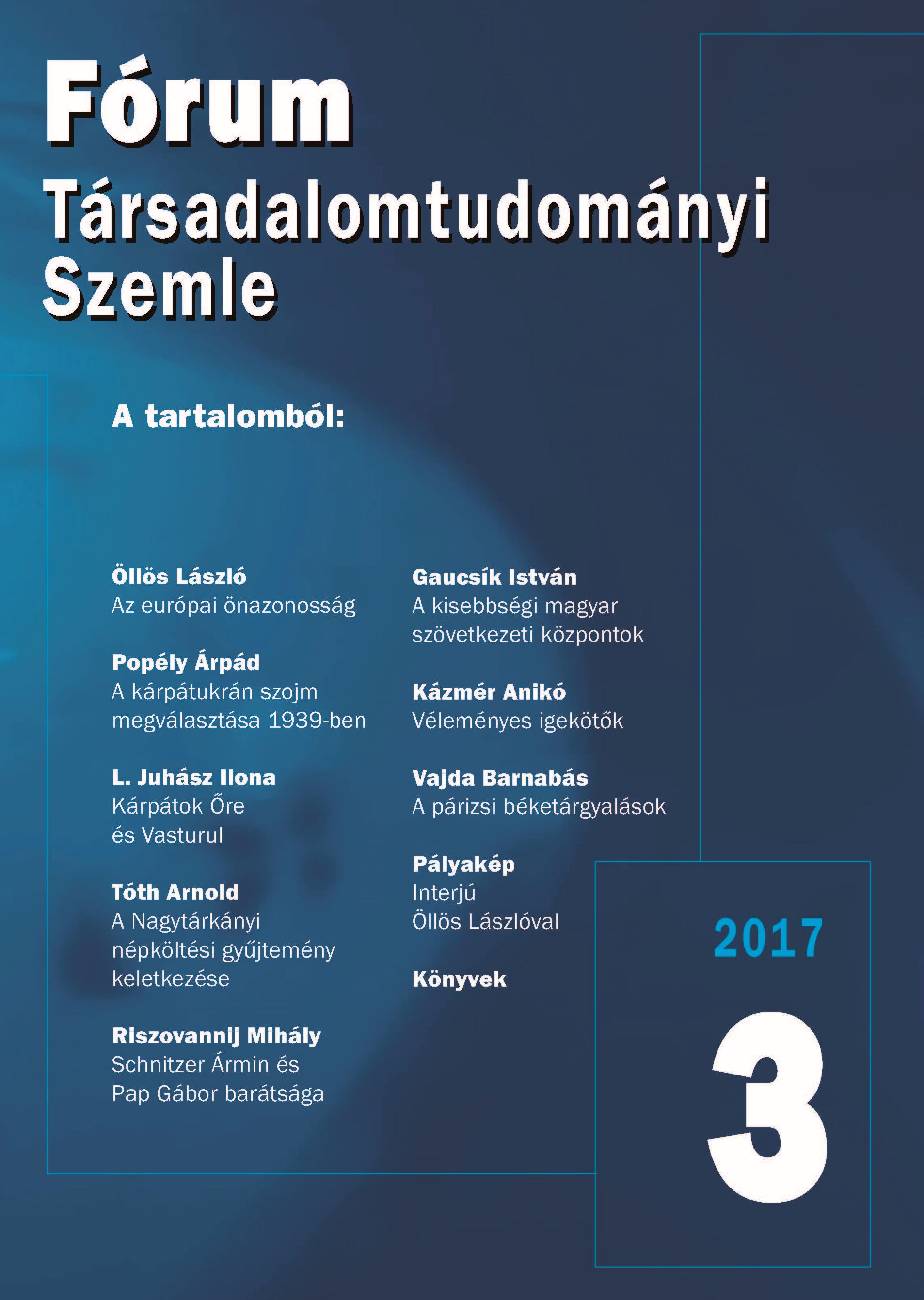A kisebbségi magyar szövetkezeti központok kérdése a két világháború közötti Csehszlovákiában
The Question of the Cooperative Centres of the Hungarian Minority in Czechoslovakia between the Two World Wars
Author(s): István GaucsíkSubject(s): Economic history, Interwar Period (1920 - 1939)
Published by: Fórum Kisebbségkutató Intézet
Keywords: nation state;economy;cooperative policy;cooperative centres
Summary/Abstract: This study explores the building of ethnic-based centres within the Czechoslovak cooperative system between the two world wars, with special regard to the Slovakian conditions. The author focuses on Hungarian initiatives of establishing cooperative centres in the early 1920s, and the loss of position of the Hangya Consumption Cooperative of Budapest. The organizations in question can be interpreted as a response to the centralizing policies of the Slovak Ústredné družstvo (Central Cooperative). The new cooperative centres were set up—or attempts receiving assistance of the political opposition in Hungary have been made to set them up—on a regional basis, especially in the Gemer and Novohrad regions, such as the Association of the Slovakian and Ruthenian Cooperatives (Szlovenszkói és Ruszinszkói Szövetkezetek Szövetsége), and the Provincial Credit Cooperative of Farmers (Gazdák Országos Hitelszövetkezete). The most successful cooperative network of the Hungarians in Slovakia, the Hanza Goods Centre (Hanza Szövetkezeti Áruközpont) based in Galanta, was established in 1925. Its foundation can be regarded both as a lucky economic-commercial constellation, and, at the same time, as a compromise with the Central Cooperative, which had eventually been a functioning project until 1938.
Journal: Fórum Társadalomtudományi Szemle
- Issue Year: XIX/2017
- Issue No: 3
- Page Range: 119-129
- Page Count: 11
- Language: Hungarian

